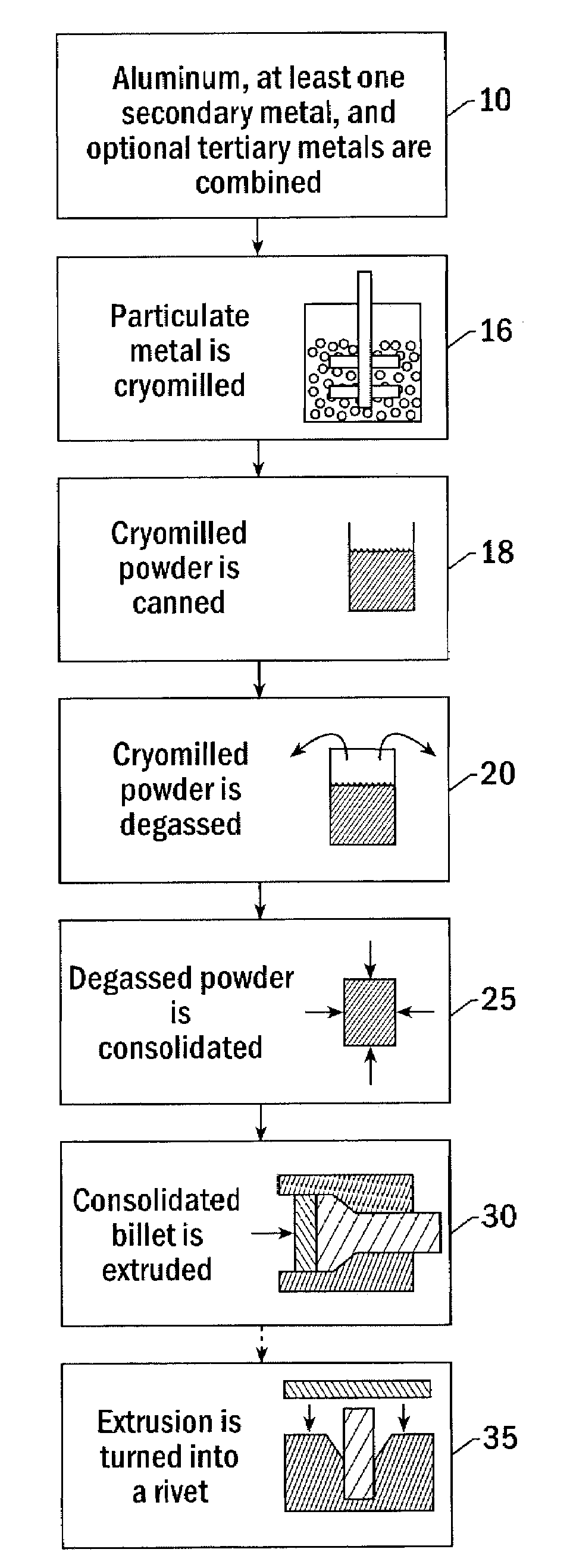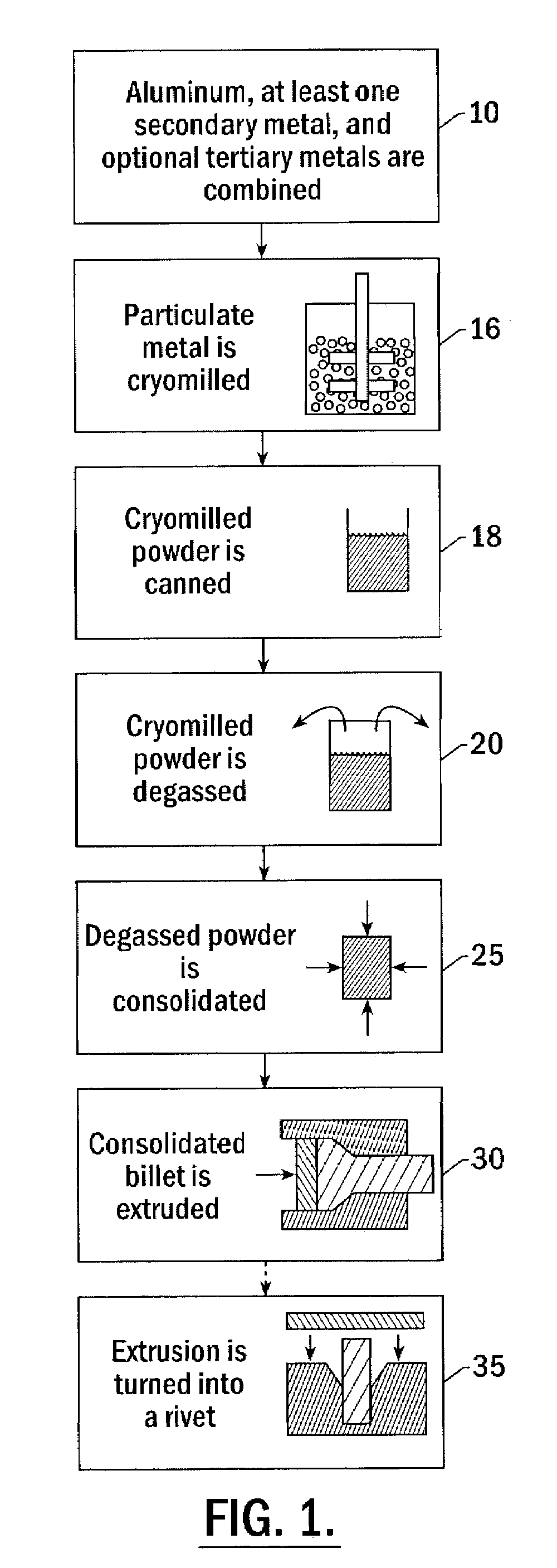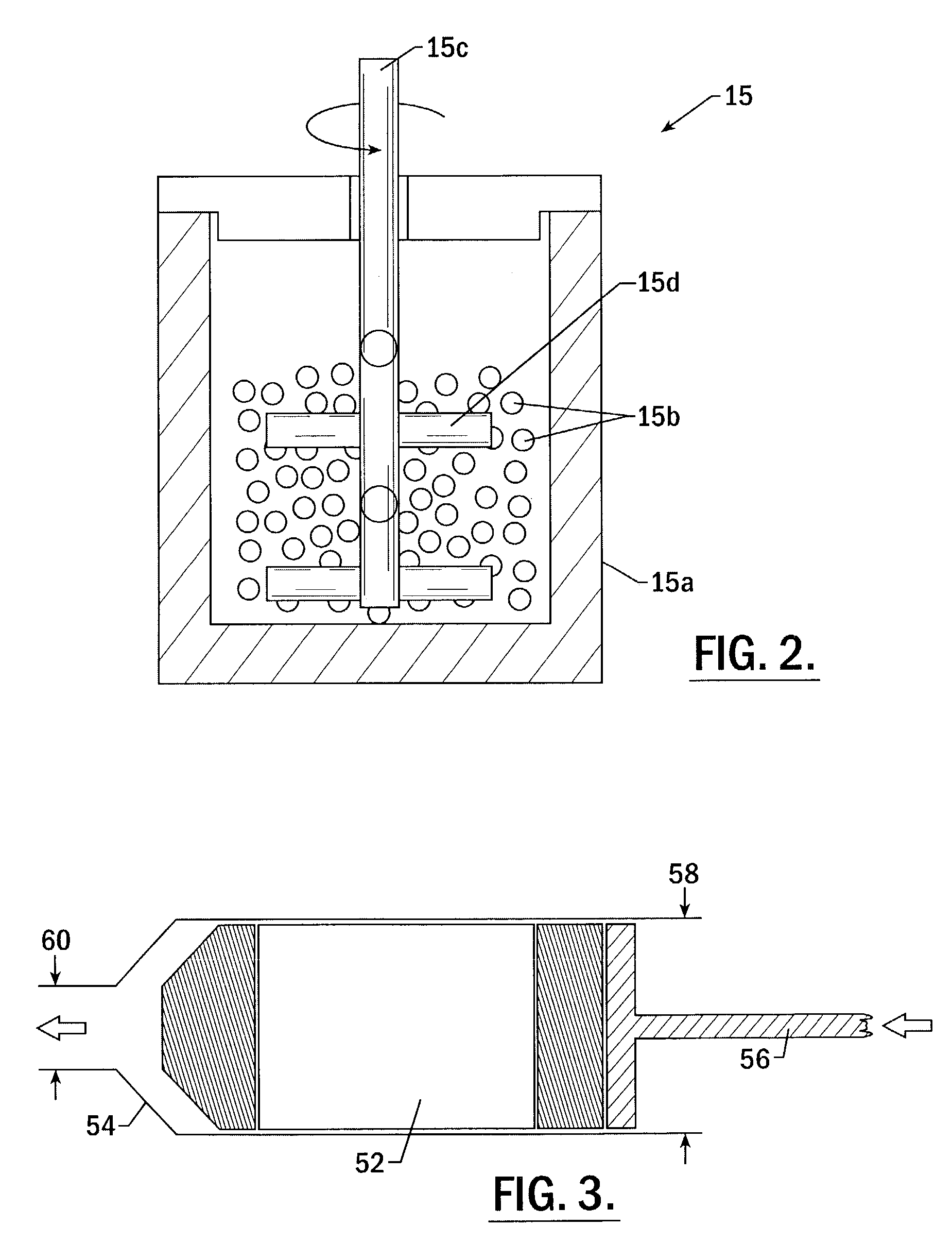Method for preparing rivets from cryomilled aluminum alloys and rivets produced thereby
a technology of aluminum alloy and cryomilling, which is applied in the direction of rivets, transportation and packaging, and fastening means, etc., can solve the problems of reducing the performance of rivets, reducing the overall strength of rivets, and reducing the resistance of rivets to localization. , to achieve the effect of avoiding coherent precipitates and contributing to overall strength
- Summary
- Abstract
- Description
- Claims
- Application Information
AI Technical Summary
Benefits of technology
Problems solved by technology
Method used
Image
Examples
Embodiment Construction
[0031]The present invention now will be described more fully hereinafter with reference to the accompanying drawings, in which preferred embodiments of the invention are shown. This invention may, however, be embodied in many different forms and should not be construed as limited to the embodiments set forth herein; rather, these embodiments are provided so that this disclosure will be thorough and complete, and will fully convey the scope of the invention to those skilled in the art. Like numbers refer to like elements throughout.
[0032]As used herein, “alloy” describes the solid solution of aluminum and a “secondary metal” selected from magnesium, lithium, silicon, titanium, and zirconium which may or may not contain precipitated compounds of aluminum and the secondary metal. In addition, the alloy may contain metal components such as Be, Ca, Sr, Ba, Ra, Sc, V, Cr, Mn, Fe, Co, Ni, Cu, Zn, Y, Nb, Mo, Tc, Ru, Rh, Pd, Ag, Cd, W, or combinations thereof. For convenience, the metals whi...
PUM
 Login to View More
Login to View More Abstract
Description
Claims
Application Information
 Login to View More
Login to View More - R&D
- Intellectual Property
- Life Sciences
- Materials
- Tech Scout
- Unparalleled Data Quality
- Higher Quality Content
- 60% Fewer Hallucinations
Browse by: Latest US Patents, China's latest patents, Technical Efficacy Thesaurus, Application Domain, Technology Topic, Popular Technical Reports.
© 2025 PatSnap. All rights reserved.Legal|Privacy policy|Modern Slavery Act Transparency Statement|Sitemap|About US| Contact US: help@patsnap.com



